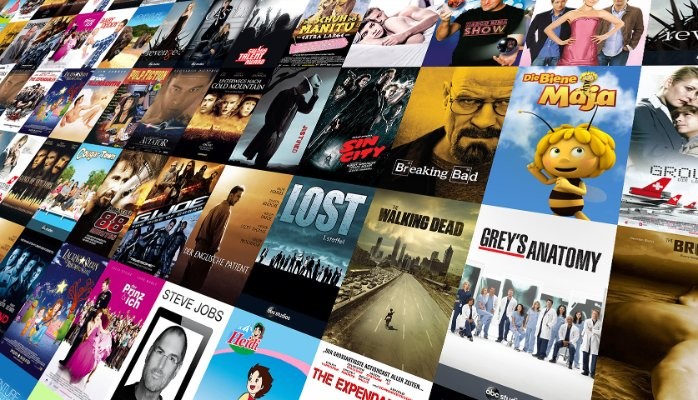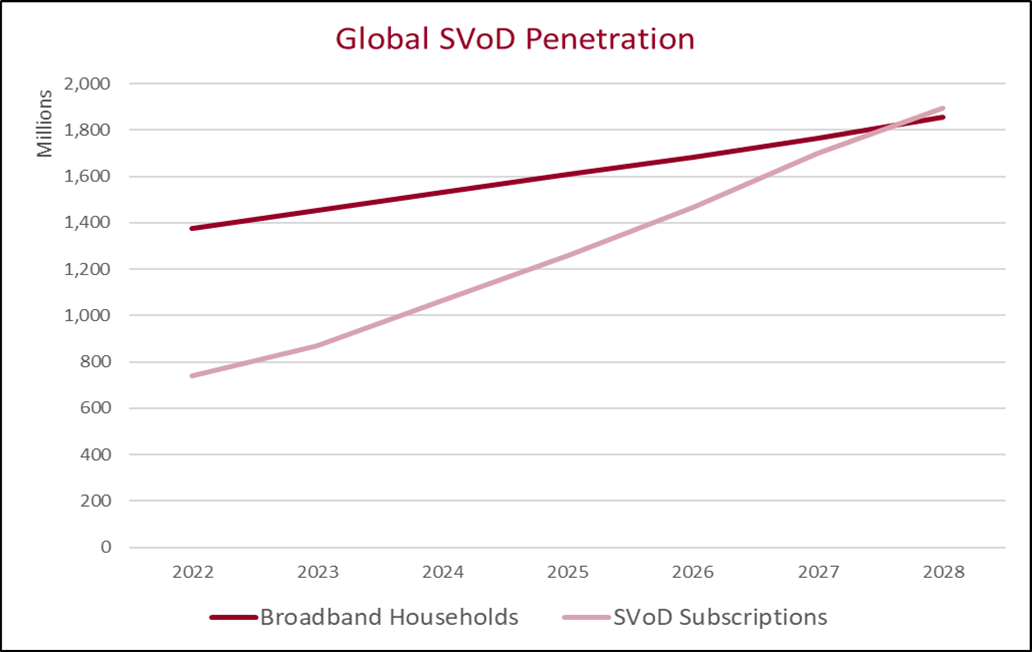New Report Examines Impact of FAST, AVoD on SVoD Market
Rethink TV thinks Netflix, et al, should launch free ad-supported tiers on which to move password 'freeloaders'

A new report from U.K. media research firm Rethink TV estimates that global SVoD services will top 1.9 billion subscribers by 2028, in a market worth $171.9 billion.
In its “Subscription Video on Demand Market Forecast 2023-2028,” the researcher examines the impact that the emergence of advertising tiers from the likes of Netflix and Disney+, as well as the increasing popularity of FAST channels will have on the traditional subscription video on demand market.

“Just prior to releasing last year’s SVoD forecast, Netflix confirmed its first subscriber loss—of 200,000 subs, or around 0.09% of its total,” the researcher said. “This prompted a wave of hysteria, and in the year since, Netflix’s return to growth and confirmation of its advertising strategy has largely set the market at ease.”
Netflix’s ad-supported tier, which launched in November 2022 for $6.99 per month, is part of a boutique of four levels of subscriptions, with premium currently priced at $19.99 per month. Although it didn’t offer specific numbers for the new tier, the company saw the number of subscribers worldwide increase by 7.66 million in its latest quarter. Disney+ launched its own ad-supported subscription tier for $7.99 per month in the U.S. in December.
But there’s another threat on the horizon—the increasing popularity of FAST (free-ad-supported TV) services that mimic traditional pay-TV channel EPGs, but without the subscription fees. These services are most often accessed through smart TVs from Samsung, Vizio, Roku, etc.
This new normal could upend the SVoD market, Rethink says.
“Complicating counting is the fact that we are about to enter a phase where SVoD services have ad-supported customers, AVoD services have subscription tiers, and FAST will undoubtedly start playing with on-demand video. The clock is also ticking until these VoD services have live linear feeds, and Netflix is due shortly to launch its first live stream,” it said. “Disney and Netflix are now in the early stages of their advertising expansion. Both have chosen to price their ad-supported bundles at a slight discount, to ensure that they can maintain their ARPU via the ads served. In time, we suspect that the SVoD platforms could see significant lifts in ARPU via advertising.”
Get the TV Tech Newsletter
The professional video industry's #1 source for news, trends and product and tech information. Sign up below.
With Netflix, in particular, moving to eliminate password sharing, Rethink suggests that the service offer a free ad-supported tier to which it could move those sharers to.
“Neither Netflix or Disney have opted for an entirely free tier, supported by a much heavier advertising load,” Rethink said. “This is significant, because the issue of account sharing has raised its head in the past year. With free options, SVoD services would be able to migrate a user from an existing SVoD subscription and into a free account with only an email address and basic account details. This would serve to keep the number of subscribers high, and potentially provide a significant boost, if the estimates of ‘freeloader’ accounts are as high as some in the industry maintain. However, as soon as a payment method is required, the success of converting a freeloader into an active subscriber plummets.
“Netflix has not broken out detail of its conversion rates, but there are nascent third-party estimates of the proportion of new additions that have chosen the ad-based tier,” the researcher added. “The coming quarters will likely provide some insight, via investor call disclosures, but the SVoD platforms will be tightlipped in the meantime.
Rethink says that Netflix will continue to boast about its profitability, especially when compared to competitors which are still operating at a loss, including Comcast, which just reported full year revenues that showed $2.1 billion earnings for Peacock, but was hamstrung by an attributed loss of some $2.5 billion.
“To this end, ARPUs across the board need to rise, and advertising is going to play a major role in this regard,” it said.
Tom has covered the broadcast technology market for the past 25 years, including three years handling member communications for the National Association of Broadcasters followed by a year as editor of Video Technology News and DTV Business executive newsletters for Phillips Publishing. In 1999 he launched digitalbroadcasting.com for internet B2B portal Verticalnet. He is also a charter member of the CTA's Academy of Digital TV Pioneers. Since 2001, he has been editor-in-chief of TV Tech (www.tvtech.com), the leading source of news and information on broadcast and related media technology and is a frequent contributor and moderator to the brand’s Tech Leadership events.

